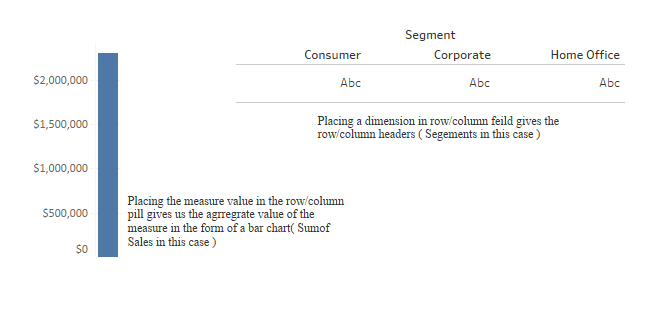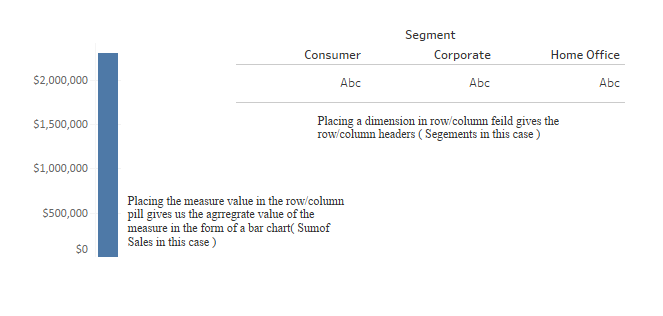
The article guides us through the most basic concept in Tableau – Measures Dimensions and how to differentiate between the two.
Whenever we import/connect a data to tableau , tableau assigns each field either as a Dimension or a Measure. To understand what they actually mean lets look into them individually.
Dimension :
Dimensions can be thought to be something on which we can slice and dice the data. By default tableau treats any field containing qualitative or a categorical information as a dimension. Example of dimension could be Region , Product Category , Sub Category etc.
Measures :
A measure can be thought of something which is quantitative and quantifies the dimension. By default tableau treats any numeric information as a measure. Example of measures could be Sales, Profit , Discount etc.
Another way to differentiate between them is that measures can be aggregated while dimensions cannot be.
If we drag a dimension to the row/column pill we get the row/column headers , however if we drag a measure to the row/column pill we get a aggregated chart ( by default tableau gives a bar chart ).

Any field that is misclassified can easily be reclassified by right-clicking on the field from within the Dimensions Shelf or Measures Shelf and choosing “Convert to dimension” or “Convert to measure” as required. The same thing can be achieved by dragging and dropping the field into the Dimensions Shelf or Measures Shelf. When you convert a dimension into a measure, Tableau will always prompt you to assign it an aggregation (Count, Average, etc.).
Note : It’s a generall misconception that measures are represented by Green background in the pills and dimension by Blue. However this is not the case.
Continuous values are represented by Green Background in the pill and Discrete by Blue.
I hope you guys enjoyed reading through this post and now are pretty clear about measures and dimensions and how do we differentiate between them.
Comments are appreciated!!

Hi Kiran , Thanks for spending your time here. In the simplest form continuous measures are those which canassume any values like age, weight etc. On the other hand discrete measures are ones which can take some specific values like Gender , State etc . Hope this helps.
Thanks Anuradha.